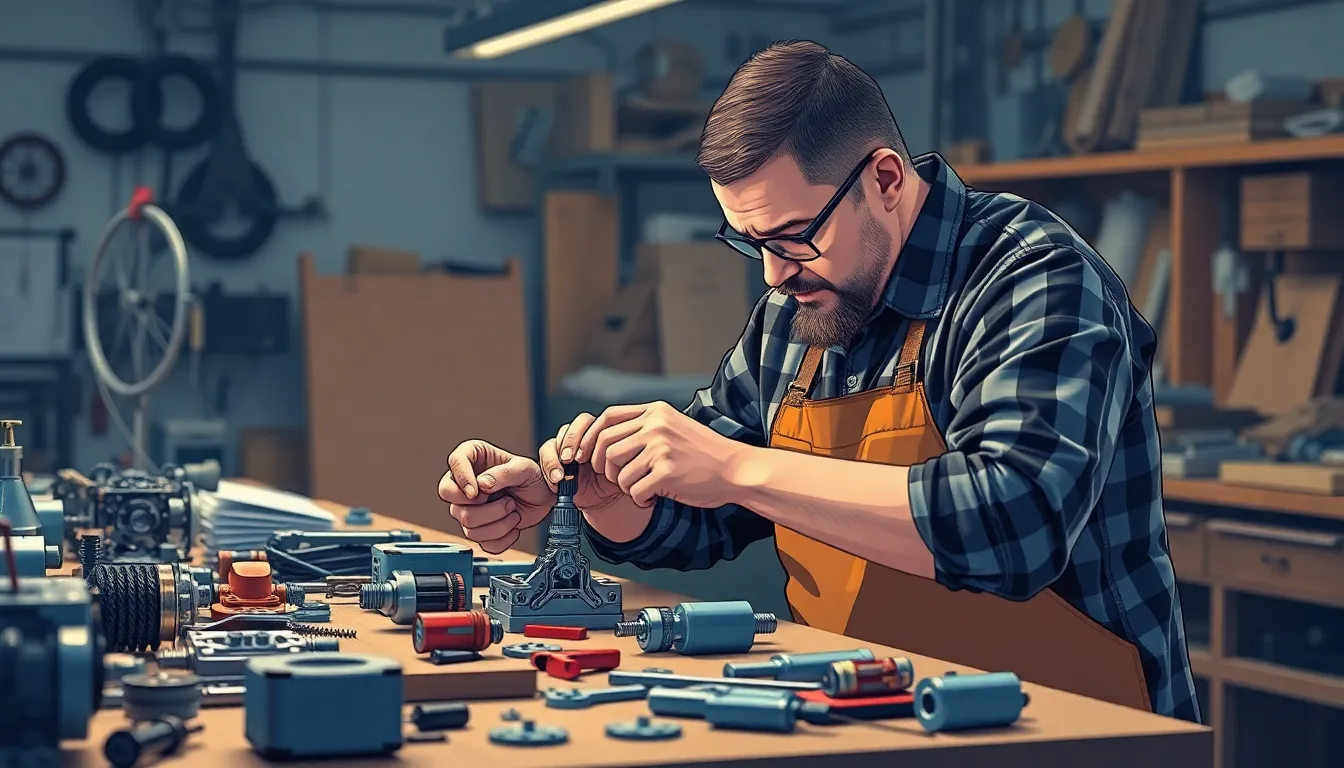Table of Contents
ToggleWhen it comes to product assembly, most people envision a chaotic scene filled with confusing instructions and a never-ending supply of tiny screws. But fear not! With a little guidance and a dash of humor, assembling your new favorite gadget can be as satisfying as a perfectly brewed cup of coffee. Imagine transforming a pile of parts into a functional masterpiece while feeling like a DIY superhero.
Understanding Product Assembly
Product assembly involves putting together various components to create a finished item. This process often requires specific tools, clear instructions, and sometimes, teamwork.
What Is Product Assembly?
Product assembly refers to the process of combining individual parts to create a functional item. Each component serves a distinct purpose, contributing to the overall operation of the product. This assembly can occur in numerous settings, including factories and home environments. Knowledge of necessary tools and assembly techniques aids in successful execution. Understanding product manuals streamlines the setup process, reducing confusion. People encounter assembly in various contexts, from furniture to electronics.
Importance of Product Assembly
Effective product assembly ensures that items function correctly and safely. Proper assembly minimizes the risk of malfunctions and extends the product’s lifespan. Businesses benefit from efficient assembly lines, as increased productivity often leads to higher profit margins. Quality control during assembly helps identify defects early, ensuring customer satisfaction. Thorough product assembly promotes consumer trust through reliability and performance. In many cases, a well-assembled product differentiates a brand in a competitive market.
Types of Product Assembly

Product assembly falls into different categories, primarily manual assembly and automated assembly. Each type has unique characteristics and processes that suit various product requirements.
Manual Assembly
Manual assembly involves individuals assembling products with hand tools and straightforward instructions. Workers perform tasks like connecting parts, installing components, and performing quality checks. This method is ideal for items that require precision and personal attention. Craftsmanship shines in manual assembly, leading to higher quality and customization. Workers often collaborate, enhancing teamwork and communication. Some industries rely on this technique for limited production runs and specialized items. Manual assembly remains relevant because of its ability to adapt to different product specifications.
Automated Assembly
Automated assembly uses machines and robotic systems to streamline the product assembly process. It offers speed and efficiency, allowing for high-volume production. Equipment performs repetitive tasks with accuracy, reducing human error and increasing output. For complex products, automated systems integrate multiple functions, from part insertion to packaging. Investment in automation leads to lower labor costs and minimized assembly times. Industries like electronics and automotive frequently utilize automated assembly due to their need for precision and consistency. As technology advances, automated assembly systems continue to evolve, enhancing productivity and innovation.
Steps in the Product Assembly Process
Product assembly encompasses several vital steps that ensure a successful outcome. Each stage requires attention to detail and strategic planning.
Planning the Assembly
Planning precedes any assembly work. It involves developing a blueprint that outlines the entire process. A clear timeline and designated roles enhance efficiency. Utilizing detailed checklists can also streamline this phase. Gathering necessary tools and workspace ensures readiness. Achieving an organized assembly area contributes greatly to productivity. Team discussions can help address potential challenges before they arise.
Sourcing Components
Sourcing components is another critical step in the assembly process. Identifying reliable suppliers guarantees access to high-quality materials. Consistent communication with these vendors helps in tracking orders. Evaluating different component options can lead to better cost efficiency. Establishing strong relationships fosters trust and reliability. Documentation regarding specifications keeps everything aligned with production requirements. Ensuring timely delivery of components minimizes delays during assembly.
Assembly Techniques
Assembly techniques vary based on the product and resources available. Adopting manual techniques allows for careful attention to detail. Utilizing tools such as screwdrivers and wrenches enhances precision. Automated techniques aid in high-speed production, particularly in larger runs. Integrating processes like just-in-time delivery can optimize workflow. Continuous training ensures that team members remain proficient in these methods. Understanding the right technique for each product type significantly impacts quality and efficiency.
Challenges in Product Assembly
Product assembly presents several challenges that can hinder the process. Recognizing these challenges can streamline efforts in tackling them.
Common Issues
Assembly teams often face miscommunication, which leads to errors during the process. Inadequate instructions frequently contribute to confusion among workers. Component mismatches arise from sourcing materials from multiple suppliers. Additionally, time constraints can pressure workers, resulting in rushed assembly and potential mistakes. Equipment malfunctions also interrupt the assembly line, causing delays and frustration. These recurring issues highlight the necessity for effective solutions and best practices.
Solutions and Best Practices
Clarity in communication forms the backbone of efficient assembly. Providing thorough and well-illustrated instructions significantly reduces confusion. Leveraging quality control ensures components meet specifications before use. Implementing regular maintenance on machinery minimizes the risk of equipment failure. Training programs enhance worker skills, leading to improved efficiency and accuracy. Setting realistic timelines allows teams to maintain quality without undue stress. Adopting these practices fosters an effective assembly environment, leading to successful product outcomes.
Product assembly doesn’t have to be a daunting task. With the right tools and a positive mindset, individuals and teams can transform parts into functional items that bring satisfaction and joy. Emphasizing clear communication and effective techniques can significantly enhance the assembly experience.
As industries continue to evolve, both manual and automated assembly methods will play crucial roles in meeting consumer demands. Embracing continuous training and best practices ensures that teams remain efficient and capable of overcoming challenges. Ultimately, the art of product assembly not only influences individual satisfaction but also contributes to a brand’s success in a competitive marketplace.




